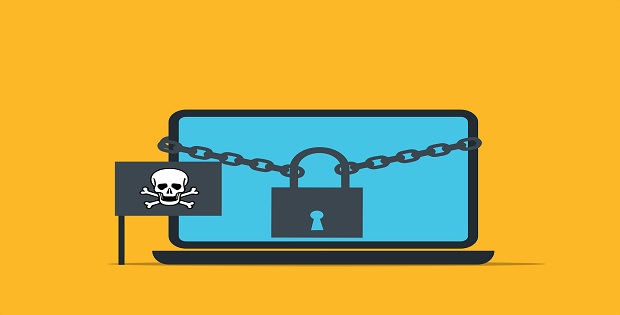How to Detect Ransomware on Computer?
Last Updated on 3 weeks by Touhid
Ransomware is a type of malicious software. The main purpose is to get unauthorized access, corrupting, or deleting the sensitive data of an organization or individuals. So, knowing how to detect ransomware on computer or smartphone is a skill every individual must know regardless of whether you run a big company or not.
Table of Contents
How to Detect Ransomware on Computer?
Before understanding how to detect ransomware on the computer, you must have a clear idea about what ransomware is and how it works.
Ransomware attacks can be dangerous for any multinational company or even individuals; these cyber-attacks can be of different types. Whatever the type may be, the main intention is to hack into your private sensitive data and ask for money to give access back to you.

How does Ransomware work?
The idea of losing access to your cherished data, images, and private documents may be nothing short of a nightmare. In this digital age where your personal and professional life is intimately intertwined into the fabric of technology, any cyber attack can be devastating both for you and your organization.
Ransomware works like viruses but instead of destroying your files completely, it encrypts your sensitive data. So as a result it becomes impossible for you to open up your files.
The hackers who distributed the ransomware take advantage of this situation and ask for money in return to release your files. Now this becomes the easiest and least expensive option for any organization or individuals to gain access back to their files.
There are different types of ransomware attacks on computers such as WannaCry, Petya, Cerber, Locky, and CryptoLocker.
Tips To Detect Ransomware on Computers
By now you already have an idea how problematic these ransomware attacks can be. Thus when you suspect something is wrong with your files in the system, you must look for ransomware, and the technique to find this is known as ransomware detection.
Combining automation and malware analysis to find infected files early in the kill chain is how ransomware detection is done.
Do, keep in mind if you can find this ransomware early in the system you can prevent the attacks making your system more vulnerable to future attacks.
The way ransomware detection operates is by automatically warning users when they notice suspicious behavior. Users can instantly stop the virus’s transmission after receiving an alert, preventing the encryption of important or sensitive files.
According to reports by Statista, the annual organization shares affected by ransomware is 72.7% which is huge. So, it becomes extremely important to know how you can detect ransomware in the initial stage to prevent data loss and financial burdens.
Additionally, it assists businesses in learning from assaults, resulting in better cybersecurity defenses and significant time and money savings.
However, detecting ransomware isn’t the easiest of tasks and this is mostly due to hundreds of different ways these things attack your files.
However, we have found out few of the most effective and commonly used methods for the detection of ransomware on computers. You can have two different approaches depending on your level of expertise.
1. Professional-based Approach
If your organization comes with professional security experts and the system is under attack, then they normally use one of three methods to detect it.
Signature-Based Detection
This method is based on recognized ransomware patterns or signatures. Malware has a distinctive signature made up of details like domain names, IP addresses, and other identifiers.
To evaluate if programs are ransomware or authorized executables, security platforms and antivirus software collect data from the programs and compare them to the list of signatures they have stored in them.
Security specialists also often use Windows PowerShell cmdlet and other open-source tools to look for flash in the file.
However, there are some limits in Signature-based detection, as it uses an old known database to match the signature with the ransomware; it can’t really detect the newer malware.
The hackers are often developing newer files which makes it difficult for this method to detect and hence it is indicated as first-level ransomware detection.
So, older ransomware strains and known-good files can be found using signature-based detection.
Deception Detection
Another method used for malware detection is deception detection. This type of detection requires a high level of knowledge about the whole cybercrime process.
Organizations can try to lure potential hackers into a trap to learn about their attacking methods and techniques. In order to deceive hostile attackers into interacting with dummy assets on their network, security teams use deceptive strategies.
Genuine users avoid these misleading components, giving security personnel a reliable way to spot potentially questionable conduct.
Behavioral Detection
The third method used to detect ransomware is behavioral detection. In this method, you will need to keep an eye on any rapid changes in file storage locations or sudden spikes in file encryption activity.
Files are frequently encrypted by ransomware, which then demands money to unlock them. As a result, monitoring for odd behavior changes might reveal signs of a ransomware outbreak.
2. Other Things To Look For
Even though these above methods are the most common ones used for ransomware detection. There are a few other methods you can use even if you are not an expert in cybercrime.
Look for any unusual saved files
When running your computer, look for any unusual files saved in the system that you didn’t install or which wasn’t previously there. This could be a potential ransomware that has entered the system.
Add exploit kit detection
An exploit kit, often known as an exploit pack, is a form of toolkit used by hackers to target weaknesses in systems. Exploit kits provide an entry point for ransomware transmission, frequently using techniques like spam or websites that have been hijacked.
So, you can add exploit kit detection to prevent this from attacking your system and many IDS, IPS, and firewall systems have this function nowadays.
Data Traffic analysis
To identify ransomware early, it’s essential to regularly monitor network traffic for any odd or suspicious activities, such as unexpected connections to well-known control servers.
Analyzing data flow is essential; sending files to dubious websites or a rapid spike in data transfers, for example, might be warning indications of problems.
Warning Signs of Ransomware Attack
If you are confused about whether or not your system is under a ransomware attack, then there are a few signs and symptoms you need to look for. These signs indicate your system is in trouble.
Efficiency reduced
If you notice that the efficiency of the system is reduced which means the system is not performing as it used to be, this can indicate a ransomware attack.
As ransomware uses up system resources so it can heavily affect the overall performance.
Changes in file name and locations
Changes to file locations and names could suggest a ransomware attack. Ransomware frequently encrypts files and adds a new file extension to them, thus changing their names.
This also has the ability to create new folders or relocate encrypted data to various locations.

Screen locked out
The main aim of ransomware is to hack your files and ask for money to unlock the files. So, you might end up seeing your computer locked up with a message on the screen asking for money.
This means that ransomware has taken control of your system and you will need help from an expert to get out of this situation.
Unknown software installed
Attackers frequently employ the installation of unwanted software during attacks, including programs like Metasploit. This tool can retrieve credentials and carry out a number of additional destructive tasks.
Changed File extensions
The presence of unusual or altered file extensions, such as .locky or .cerber, on your files, is a clear sign of a ransomware attack. Files with these extensions are frequently renamed and encrypted by ransomware, making them unavailable.
Most Common Ways To Get Ransomware Attacks
Sometimes, you may think your whole system is highly protected but still, it gets ransomware attacks. This can be quite annoying and despite your confidence in the system, it can be lacking; this malware can often enter your system from uncountable sources.
From deep research by our experts, we have found out some of the common ways to get these attacks. So knowing about this can help you prevent future attacks.
Through Phishing emails
This is one of the most common ways ransomware gets spread into your system. Malicious attachments are sent through emails and as soon as you download these files or visit the link associated with it, your system will get attacked.
Using RDP
RDP or remote desktop protocol is a system from which someone else can access your computer through a virtual network. Hackers often try to gain remote access to the system and spread malicious attacks.
Fake advertising
Through “Trojan pop-ups” or advertisements with hidden harmful code, fake advertisements and exploit kits can work together to distribute ransomware.
Unaware visitors can get accidentally sent to the landing page of the exploit kit when they click on these adverts, placing them at risk of contracting ransomware.
From Pen Drive or external drives
This is one of the easiest methods used to spread ransomware onto your system. When you use your external drives on public PCs, ransomware can get copied onto them.
So, as soon you plug these drives into your PC these malicious programs can spread into the system causing serious problems within.
Tips and Tricks To Improve Ransomware Detection
These expert tips and tricks below will help you detect ransomware more smoothly.
- If your organization is big and is highly dependent on virtual networking, appoint a team of cybercrime security experts.
- Try to keep the whole system and software updated to prevent attacks from newer ransomware
- Always monitor your network and data traffic and check if you notice any unusual activity.
- Create network segments and isolate possibly compromised areas to stop ransomware from spreading.
- Conduct routine security audits to find vulnerabilities and improve overall security.
FAQs
If you have still some questions regarding malicious attacks? Keep on reading our FAQS below to clear out all of these confusions.
Is it possible for an antivirus to detect ransomware?
Yes, ransomware can be detected by antivirus software. Most of these software primarily use signature-based detection to detect and block ransomware attacks using their database containing over 1000 of these signatures. However, some latest ransomware may not be detected by antivirus programs.
Can I use VPN to prevent ransomware attacks?
The main purpose of a Virtual Private Network (VPN) is to offer security and anonymity for transmitting data over the Internet. A VPN can improve your overall internet security, but it cannot directly stop attacks by ransomware from happening.
Can I remove ransomware from my system?
Sometimes, it becomes impossible to decrypt the files attacked by ransomware until the hacker himself provides the decryption key. But at times networking security experts can try to decrypt the files but that’s a long and time-consuming process.
Final Words
Ransomware attacks can completely break the virtual system of your organization which in turn can lead to losses of over a million dollars.
It is always advisable to train your employees properly as a little mistake from them can cause a serious level of damage to the whole company. Also, make sure to appoint networking experts to keep track of all the activity and prevent malicious attacks.
How to detect ransomware on a computer – is the first stage which makes it important to know about the identification methods.




